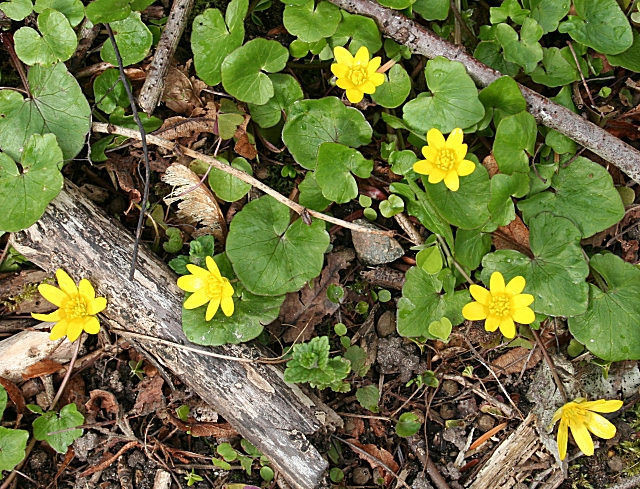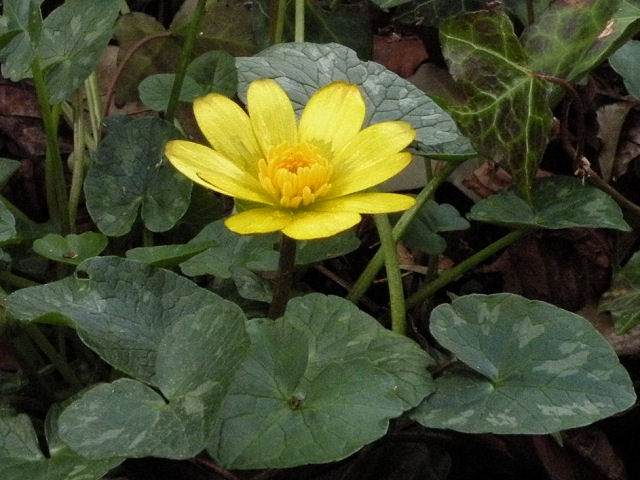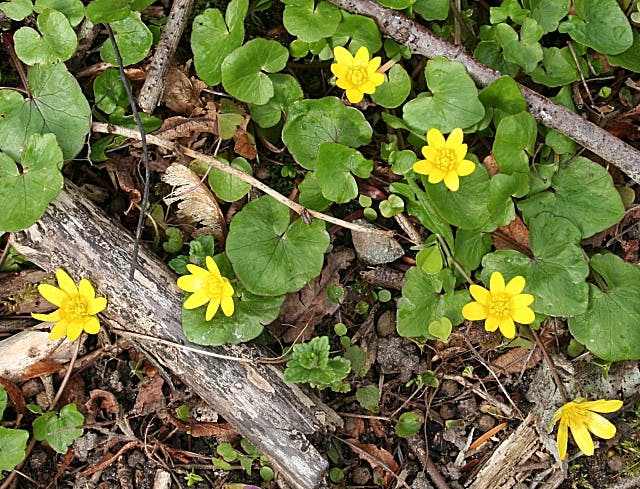Lesser Celandine | Ficaria verna (formerly Ranunculus ficaria)






Perennial; kidney to heart shaped leaves. Yellow flowers with 8-12 glossy petals. Pale colored bulblets at stem bases. Forms a continuous green carpet.
Lesser Celandine (Ficaria verna) is a misleadingly beautiful perennial member of the buttercup family (Ranunculaceae). This early spring species is low-growing, but notable for its fleshy leaves and bright yellow flowers with 8-9 petals. It can sometimes be missed if growing amongst other low-growing weeds with yellow flowers like common dandelions. Lesser Celandine tends to thrive in partially shaded sites with moist soils. Before the flowers appear in February, the heart-shaped leaves can be hidden among fast growing grass along fences or walkways. This species is also known to like moist forest understories.
Though alluring, Lesser Celandine truly is an aggressive weed. It has been documented to form dense mats that can completely exclude any other vegetation from growing nearby. Additionally, once it is established, it is very difficult to control and eradicate. Common management practices for this weed include repeated treatments like manual excavation (digging it up multiple years in a row), shading it out using cardboard or black tarp, or in the case of extensive infestations, herbicide use.
Though it is known that this species occurs in Benton County, if you see something, say something. Report sightings of Lesser Celandine in our county via the Oregon Invasive Species Hotline. If it’s growing in your neighborhood, share your knowledge of how difficult it is to control and encourage your neighbors to remove it by digging it up and throwing it in the trash (not in the compost!)
Plant Details
| Habitat Notes | Forest floodplains, some drier uplands and meadows. |
|---|---|
| Mature Height | Low lying |



